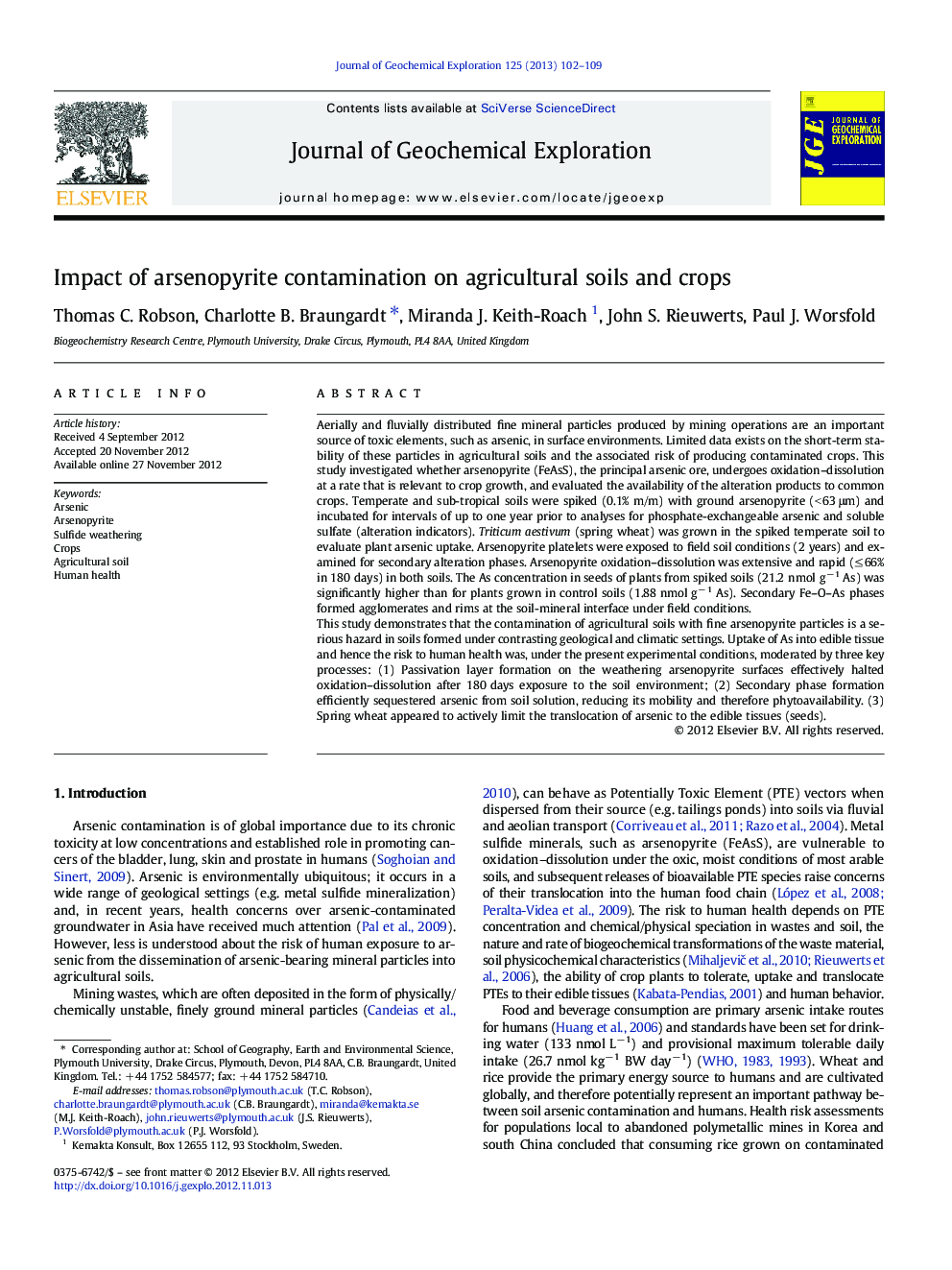| کد مقاله | کد نشریه | سال انتشار | مقاله انگلیسی | نسخه تمام متن |
|---|---|---|---|---|
| 4457612 | 1620931 | 2013 | 8 صفحه PDF | دانلود رایگان |

Aerially and fluvially distributed fine mineral particles produced by mining operations are an important source of toxic elements, such as arsenic, in surface environments. Limited data exists on the short-term stability of these particles in agricultural soils and the associated risk of producing contaminated crops. This study investigated whether arsenopyrite (FeAsS), the principal arsenic ore, undergoes oxidation–dissolution at a rate that is relevant to crop growth, and evaluated the availability of the alteration products to common crops. Temperate and sub-tropical soils were spiked (0.1% m/m) with ground arsenopyrite (< 63 μm) and incubated for intervals of up to one year prior to analyses for phosphate-exchangeable arsenic and soluble sulfate (alteration indicators). Triticum aestivum (spring wheat) was grown in the spiked temperate soil to evaluate plant arsenic uptake. Arsenopyrite platelets were exposed to field soil conditions (2 years) and examined for secondary alteration phases. Arsenopyrite oxidation–dissolution was extensive and rapid (≤ 66% in 180 days) in both soils. The As concentration in seeds of plants from spiked soils (21.2 nmol g− 1 As) was significantly higher than for plants grown in control soils (1.88 nmol g− 1 As). Secondary Fe–O–As phases formed agglomerates and rims at the soil-mineral interface under field conditions.This study demonstrates that the contamination of agricultural soils with fine arsenopyrite particles is a serious hazard in soils formed under contrasting geological and climatic settings. Uptake of As into edible tissue and hence the risk to human health was, under the present experimental conditions, moderated by three key processes: (1) Passivation layer formation on the weathering arsenopyrite surfaces effectively halted oxidation–dissolution after 180 days exposure to the soil environment; (2) Secondary phase formation efficiently sequestered arsenic from soil solution, reducing its mobility and therefore phytoavailability. (3) Spring wheat appeared to actively limit the translocation of arsenic to the edible tissues (seeds).
► We investigated the impact of arsenopyrite contamination in agricultural soils.
► Arsenopyrite oxidation–dissolution was extensive and rapid (≤ 66% in 180 days).
► Arsenopyrite alteration products were bioavailable to spring wheat.
► Fe–As–O secondary phases passivated arsenopyrite and limited As mobility.
► Arsenopyrite contamination of agricultural soils may present a risk to human health.
Journal: Journal of Geochemical Exploration - Volume 125, February 2013, Pages 102–109